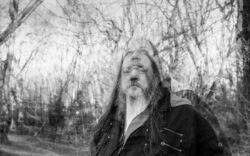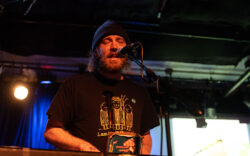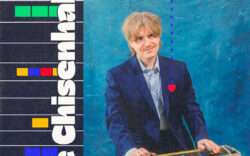Right toward the very end of this year’s South By Southwest conference it was announced that the 2026 instance would have all three main, and traditionally staggered, festival tracks—music, film and TV, and interactive (AKA technology)—run concurrently. This means the end of the traditional big music weekend that closes out the festival. So this also means that SXSW music as we have experienced it ended in 2025. But it also ended in 2020. It has been tweaked and experimented with every year since COVID-19 set the world alight. And, as evidenced in full relief last year and again in 2025, pretty much all the heavy lifting responsible for attracting both artists and attendees has fallen back squarely on the shoulders of the SXSW organization.
Even as the previously rampant unofficial events and off-brand happenings caused a huge amount of headaches and the occasional, sometimes well justified, gnashing of teeth, the fact remains that they did much to amplify SXSW as both a destination and state of mind. I’d say you couldn’t buy that kind of advertising but, clearly, you can. Indeed, it’s the absence of such that makes it so clear. This not-inconsiderable economic activity existed in a space where outside barkers of all stripes (tech companies, publishers, indie brands, etc.) spent money promoting their own side-show events via a brand that would eventually and necessarily wind up cracking down on the use of its trade and service marks. This crackdown went on for a few years and then, blammo! 2020 was the hard reset that ushered in a new age of purse clutching. While this change certainly made it much easier to nimbly navigate both the streets of Austin, TX itself as well as slip in and out of music showcases with little headache or wait, on the promotional side of things SXSW is back to carrying nearly all its own water.
As I mentioned in my coverage in 2024, it’s actually much better this way. At least for now the weeks of endless hype surrounding industry buzz bands playing multiple events is gone, replaced by steadily working artists for whom SXSW is an important, but far from singular part of the path, they’re cutting. No less than Simon Raymonde (Cocteau Twins, Bella Union) also expressed this during his talk with Alejandro Cohen (music director of Los Angeles’ tastemaking radio station KCRW 89.9 FM) when he mentioned that SXSW, “Feels more like a music discovery festival again.” That’s very true, but there’s also still plenty of opportunities to get close, or at least closer, to legendary folks like Raymonde. But if you were so inclined this year, you could have caught Metallica’s Lars Ulrich in a talk with Apple Music’s global creative director Zane Lowe on the topic of Metallica’s ongoing “embracing” of technology to bring world-class live events to their fans. Or you could have seen Steve Wynn (The Dream Syndicate) read from his newly published memoir I Wouldn’t Say It If It Wasn’t True interspersed with acoustic performances.
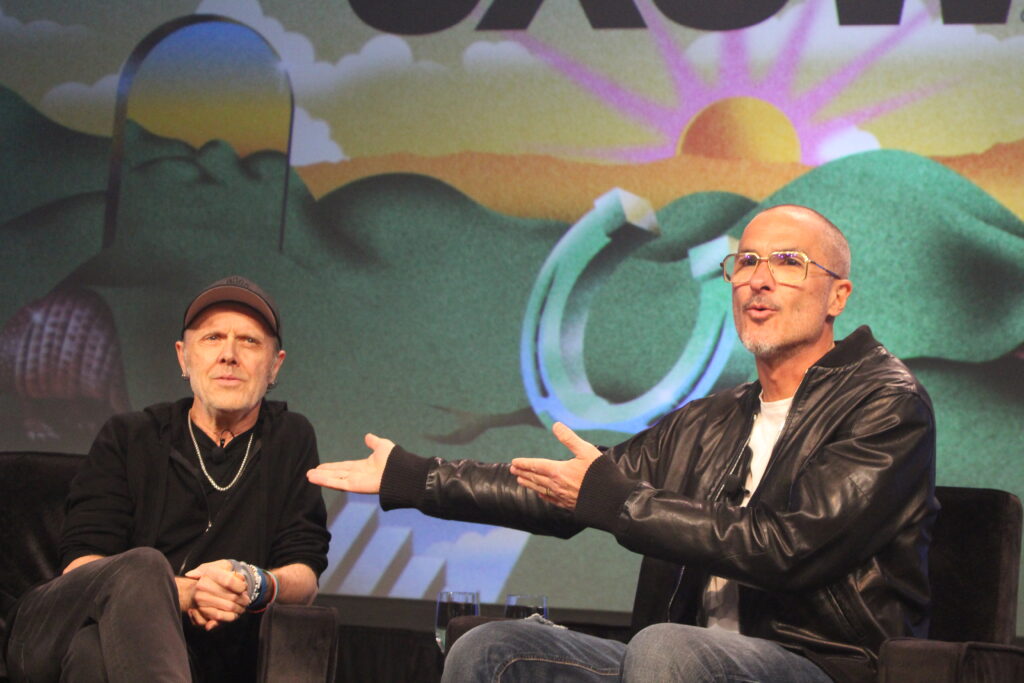
Further, you could have sat in on the keynote discussion between Tom Morello (Rage Against The Machine) and John Fogerty (oh, come on!) which was particularly lighthearted, amusing, distinctly entertaining and inspiring. The night before, Fogerty had played Austin venue Stubb’s, which is now known as much for its enormous backyard venue as it ever was for its barbecue, and the lines had formed quite early for this one. The opening band was Hearty Har, which is a terrible but memorable name, and that just happened to be the band formed by Fogerty’s sons Shane and Tyler. They wound up being way better than I expected, and I’d go see them again, but probably wouldn’t travel another thousand miles to do so. It’s one thing to be born into rock and roll royalty, but that alone won’t make your fingers fly across a fretboard with any particular skill. Hearty Har was sometimes like a less moody Allman Brothers Band if they’d listened to more Freddie King and less Taj Mahal, but with far more of that particular type of youthful exuberance that comes from leading an in-the-pocket, locked-in rock and roll band.

John Fogerty was everything anyone could have expected, and likely a lot more. Positively explosive, all 79 years of him, right out of the gate he—who had just recently regained the rights to his long-lost and quite storied catalog of songs—declared, “I just got all my songs back, and I’m gonna play every one of ‘em!” Which he didn’t, but he played enough that any complaints were just those seeking to find an available ear. Pretty much the only heavily anticipated song he didn’t play was “Run Through The Jungle,” which was funny because he did play 1984’s “The Old Man Down The Road,” the song that caused him to be sued by his former publisher over ripping off “Run Through The Jungle,” which he’d also written but of which he did not control the rights. That’s right, folks, in the upside down of the music industry you can get sued for sounding too much like yourself. On his encores of “Travelin’ Band” and “Proud Mary,” Morello stepped up on guitar and joined in.
I did manage to squeeze in one technology talk, and it felt like a rarity as it was one of the only I could find that wasn’t neck deep in the subject of artificial intelligence. Jay Graber, inventor and entrepreneur and now best known as the creator of social media protocol Bluesky, was engaging and informative and genuine. When she speaks of the social media ecosystem, it’s in that same somewhat romantic way we used to speak of the internet itself as a democratizing force. One that was designated by its architecture as being safe from the forces of deep pockets and one in which anyone could participate. To this end, she amplified the aspect of Bluesky’s open-source code and actively encouraged people to take it and run with it. And I sure hope someone does because the whole mood and vibe of the native application is as if National Public Radio and 2008-era Tumblr created a social network populated by the people who were always running for student government offices back in school and moderated by milk monitors. I don’t know what the answer is here, but social media shouldn’t feel like a study hall.
One thing you can always count on at SXSW is a million flyers, some wonderfully designed, with huge lists of bands but no set times nor venue addresses. So, while I tried to catch Montreal’s La Sécurité at Cheer Up Charlie’s, I wound up catching Melbourne’s Radio Free Alice. Fully judging them from their appearance I expected them to trot out some by-the-numbers post-punk and snarl a bunch. But they actually channeled a decent amount of the soul of Big Country and even pre-Big Country punk outfit Skids.
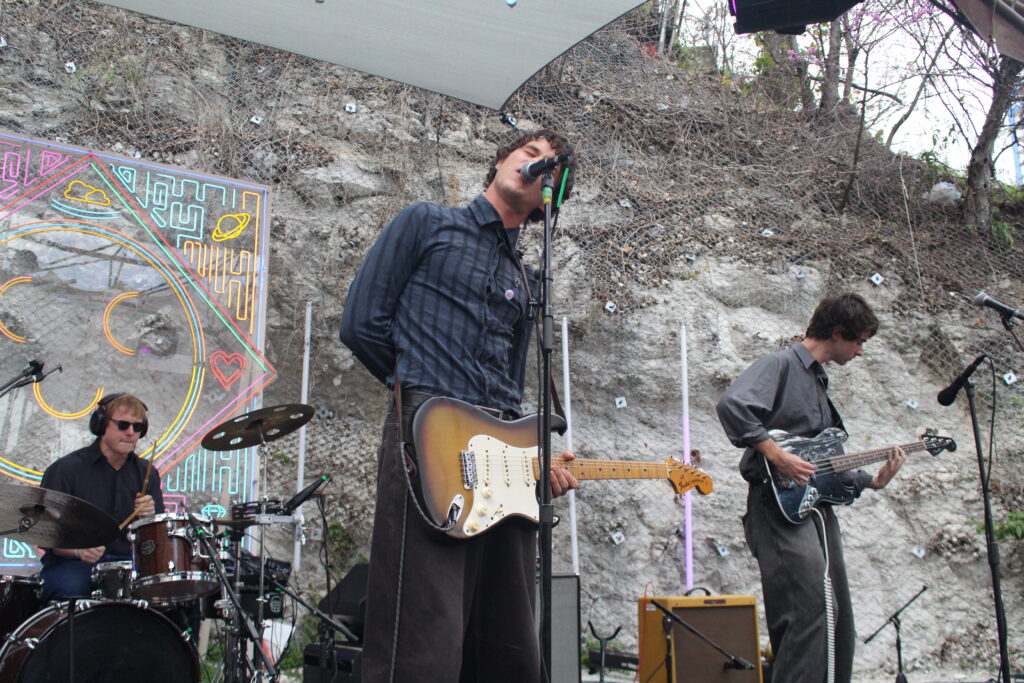
Minneapolis’ Humbird (the performing and recording name of Siri Undlin) brought her Americana, which is best when dipping into the psychedelic, to Antone’s in fine form, including a shattering rendition of Blind Lemon Jefferson’s “See That My Grave Is Kept Clean.” She was followed by Chicago powerhouse Elizabeth Moen, who, if she keeps going the way she has been, is on deck to become, at least at some level, the next Bonnie Raitt.
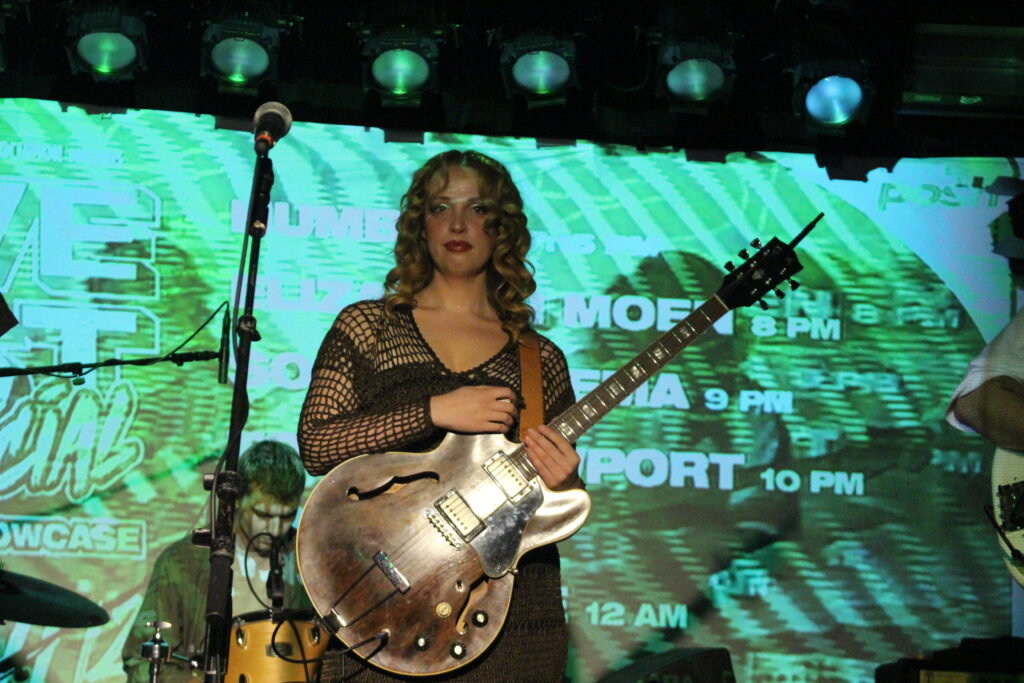
I’ve said this for years and will again for added emphasis: If you’re ever in Austin for SXSW, try to catch at least one show at the Central Presbyterian Church. These folks open their sanctuary each year with no judgement toward the artists or audience. They are the friendliest staff in town, and the church’s humbling sanctuary, not its first on this site, was built in 1957. Gallura, Italy’s Daniela Pes glided seamlessly between noisy electronic manipulations and gorgeously refined vocal executions. On a lighter note, Iceland’s Sunna Margrét sometimes flashed a grin that made her seem like a European Taylor Swift. Beyond this, her expansive take on pop music recalled a very slight amount of Laurie Anderson but, mostly, just fit with the times. She also covered The Feelies’ 2017 song “When To Go,” which was an interesting choice because usually when someone makes the decision to cover a classic band they reach much deeper into the catalog. So this came across as a genuine choice made by a fan instead of one seeking some mysterious quantity of authenticity points.
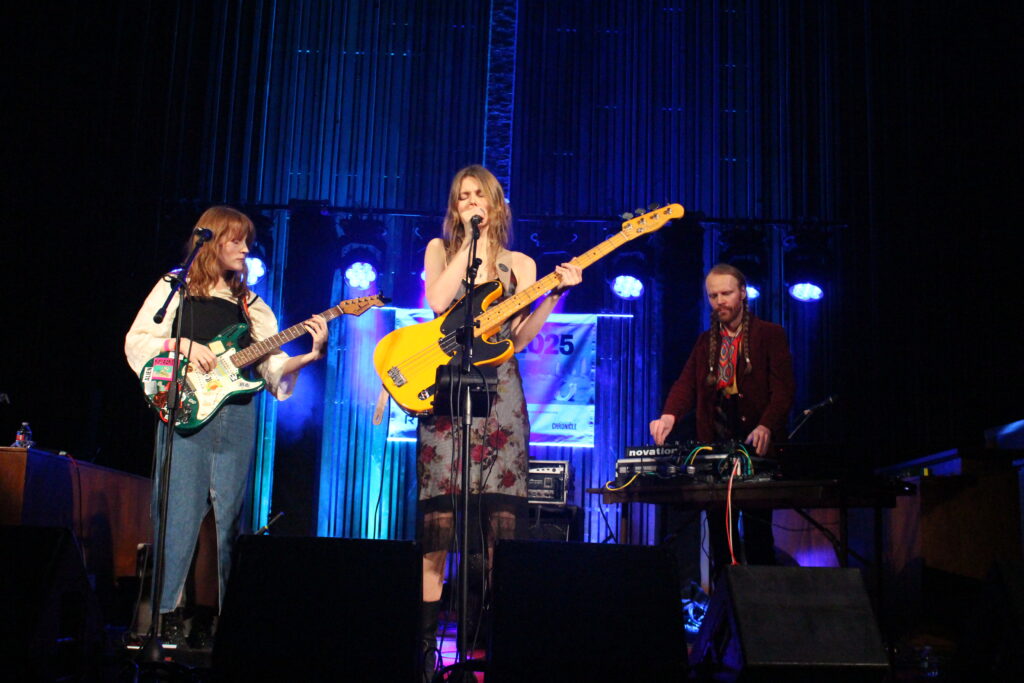
Canada’s Bon Enfant was nearly like a modern Fleetwood Mac on the Swan Dive back patio, and that’s a comparison I mean mostly structurally and compositionally and not as a sound-comparison, but the real hero of this whole crew is guitarist Guillaume Chiasson who left every song fully serviced but also seemed to populate his own universe in his corner of stage-right. On the inside stage immediately afterward, Montreal’s Annie-Claude Deschênes performed her electronically propelled absurdist performance art in spectacular fashion. She had every opportunity to slip into rote electro boredom, which would have been easily masked by the darkness of the club, but she was fully engaged, present and emotionally available. She also included an interpolation of The Crazy World Of Arthur Brown’s 1968 hit “Fire.”
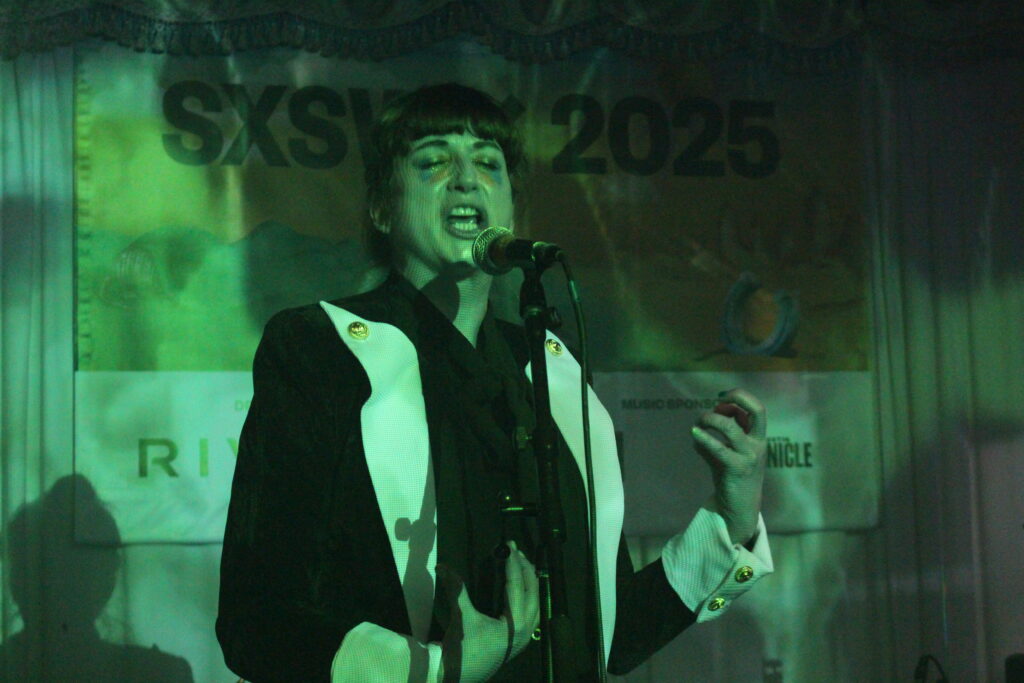
New York’s Bummer Camp overcame its goofy name and has perfected its hard lean into the darkest, heaviest parts of My Bloody Valentine so much that even coming up for air feels like surrender. Austin’s own heavily hyped Die Spitz was a disappointment. I should have known once I spied the lead guitarist’s sunglasses that said “Eat Shit” right across the lenses. At first, I thought this was coming dangerously close to Lester Bangs’ belief that the ultimate sin of any performer is having contempt for one’s audience. Then I realized that this wasn’t really all that thought out. I can see how Die Spitz might appeal to those who hadn’t experienced the phenomena of grunge at its creation, but that doesn’t mean I have to pay it any more attention than I already have. And the thing is, Die Spitz’s records are far better than the show I saw there on the front patio of the 13th Floor, but even those are pretty indistinguishable from any number of bands from decades ago.
Saint David’s Episcopal Church opened its sanctuary for the first time this year and I felt, honestly, lucky to catch Italy’s Her Skin (Sara Ammendolia) in such an atmosphere. She plays the kind of breezy but heavy acousticisms you’d find in the middle of a mixtape made by a close friend. She’s in possession of a grace that only comes from having stumbled somewhere, and her music is as gentle as the air that carries it.

From our very own Athens, GA Rubber Udder gave Austin its most clearly realized modern interpretation of Butthole Surfers’ noise and aesthetic than it has likely gotten in several years. Honeypuppy brought its solid pop to town as well, and played to good sized audiences. I managed to miss every single show by Five Eight, but I did see the dudes in passing, and I feel like my historic attendance at their appearances can speak for itself. Monsoon’s set early in the day at Chess Club, for Athens’ Indecent Artistry, was fiery and raw. I was honestly bummed I had to miss Sarah Mootz’s debut SXSW performance at Buford’s for Austin’s Mix 94.7, but I just couldn’t make it across town in time.

The “official” Athens In Austin party, which this year was much more like a New West/ Normaltown Records showcase than a broadly-focused Athens party, happened at The Continental Club, which is a bit away from the festival’s main footprint. Even so, I managed to catch my desired sets by Susto Stringband—a name which should be fairly self-explanatory as the stringy collaboration between Charleston’s Susto and Asheville’s Holler Choir—and The Pink Stones. Now, one thing about Austin audiences that just drives me bonkers is the absolute refusal to move out of the way when someone’s walking through a crowd. You’d think every one of these Texans were standing on their own tiny oil claim by the down-nose looks you get and the sometimes palpable sense of imminent violence that accompanies those looks. Whatever, as Ratso Rizzo says in Midnight Cowboy, “I’m walkin’ here!” Even so, I had to watch The Pink Stones from behind the stage because of this, but they sounded just as good as if I was lookin’ right at ‘em.
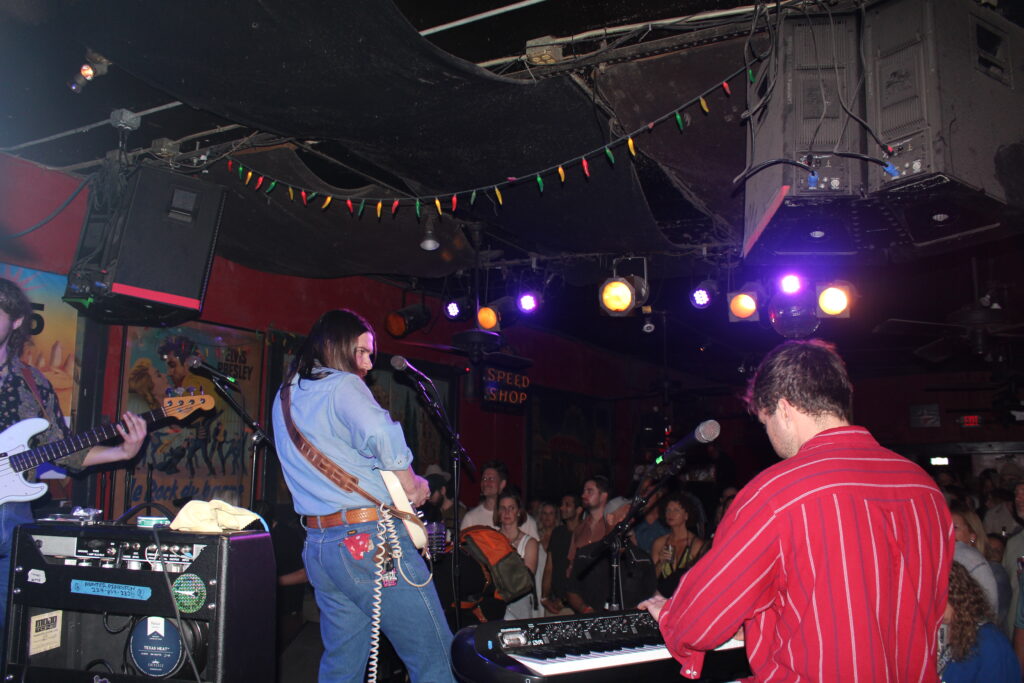
There’s a couple of handfuls of other artists I saw, and even several I made a good effort to catch, but none were so overtly engaging or spectacularly attention-grabbing that I can come up with anything creative or specifically interesting to say about them. So, in the Honorable Mention file, let’s drop Golomb, Hiding Places, KUČKA, Coldwave, and even critical darlings and traditional heavy hitters Jon Langford (The Mekons) and Jad Fair.
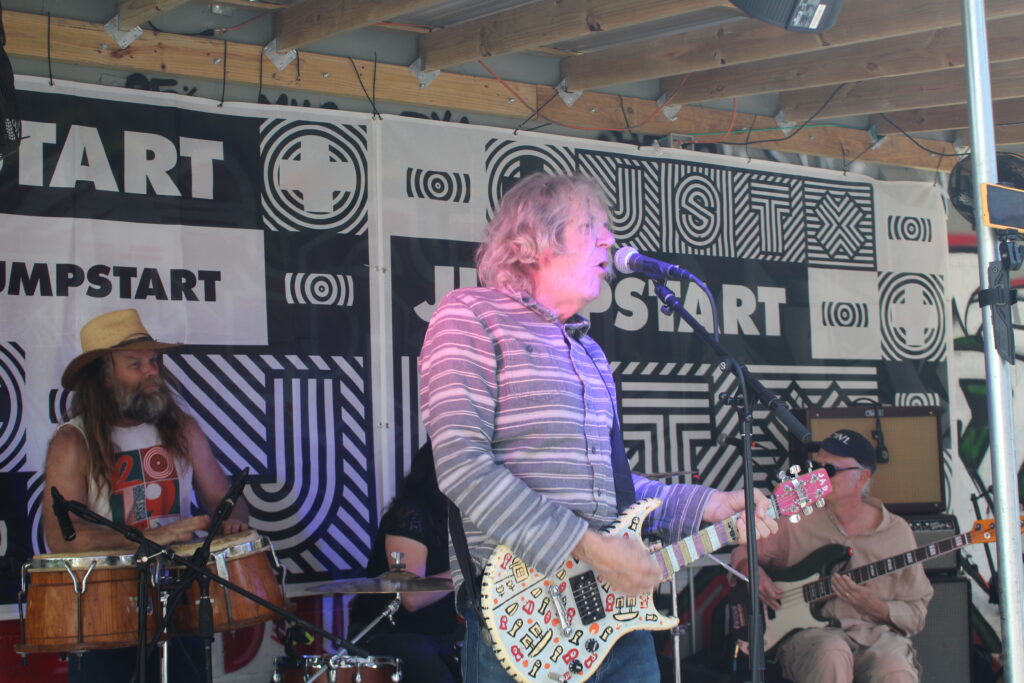
Which leaves me plenty of room to talk about Dusted. This is the years-running, but not very prolific, project by Brian Borcherdt of Canada’s Holy Fuck, which is another totally dumb band name but it’s been around so long now it’s stupid to even bother mentioning it. He took the altar at Saint David’s with his tiny ensemble and blessed the whole chapel with music that is the polar opposite of his main band. Whereas Holy Fuck has an all-but-guaranteed place in the legacy of heavy, electronic dance-oriented music, Dusted is still eeking its way to some recognition of its brutally introspective and deeply personal songwriting that isn’t centered solely around critical acclaim. Now with three full-length albums out since 2012, and a couple of fistfuls of solo releases under his given name, Borcherdt can drive the most hardened to tears and the most stoic to empathy. His persistent, undulating rhythmic sensibilities are present in Dusted’s work, but in a way that seems completely unrelated to Holy Fuck. And while it would be difficult to completely divorce Borcherdt’s projects from one another, they are apart to such a degree that it was enough for me to intentionally slough off an appearance by the latter on this same night. As I told Flagpole photographer Mike White, I’d considered it but needed to “… let Dusted brew in my soul for a while.” And it did for the rest of the week.
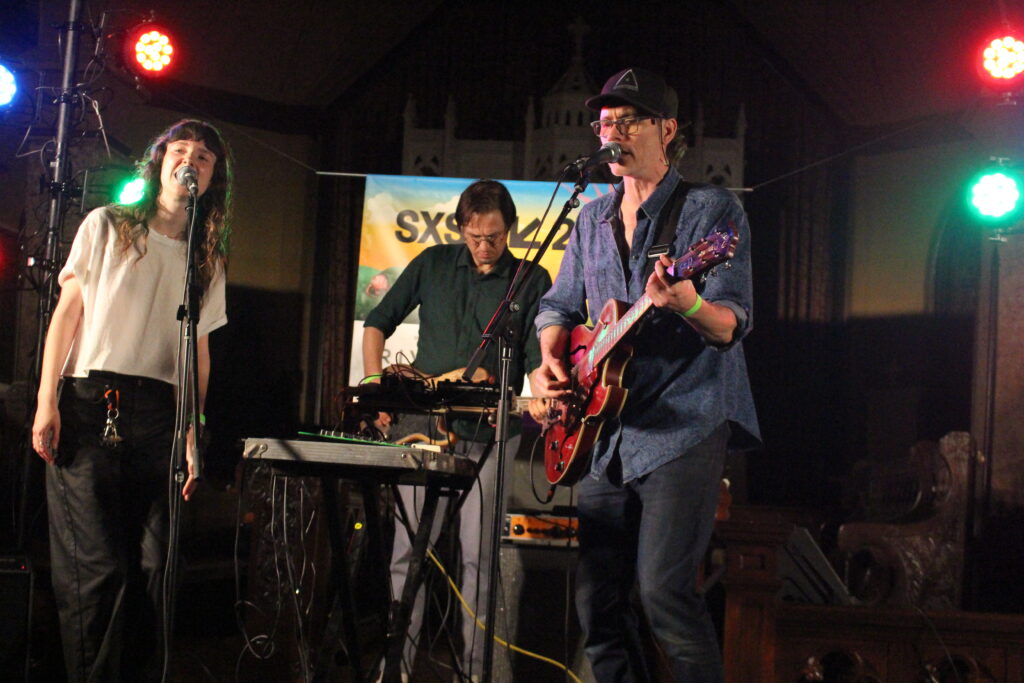
It’s in moments like this that SXSW actually happens. Not in the broad pronouncements or hyped brand activations or any of the glitzy industry tar-traps that separate people from their time and attention. But in the small moments where one can imagine oneself as the only audience, and then take that moment home even though there’s just no capturing the right way to describe something or, even, a reasonable work around. You have to sit on your proverbial hands, remove your critical hat, and just keep it with you. For me, every year at SXSW has had one of these moments, and Dusted provided this year’s. Here’s to these continuing to happen no matter what 2026, and beyond, brings to SXSW and Austin, TX.
Like what you just read? Support Flagpole by making a donation today. Every dollar you give helps fund our ongoing mission to provide Athens with quality, independent journalism.
